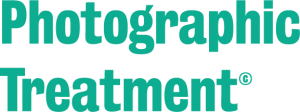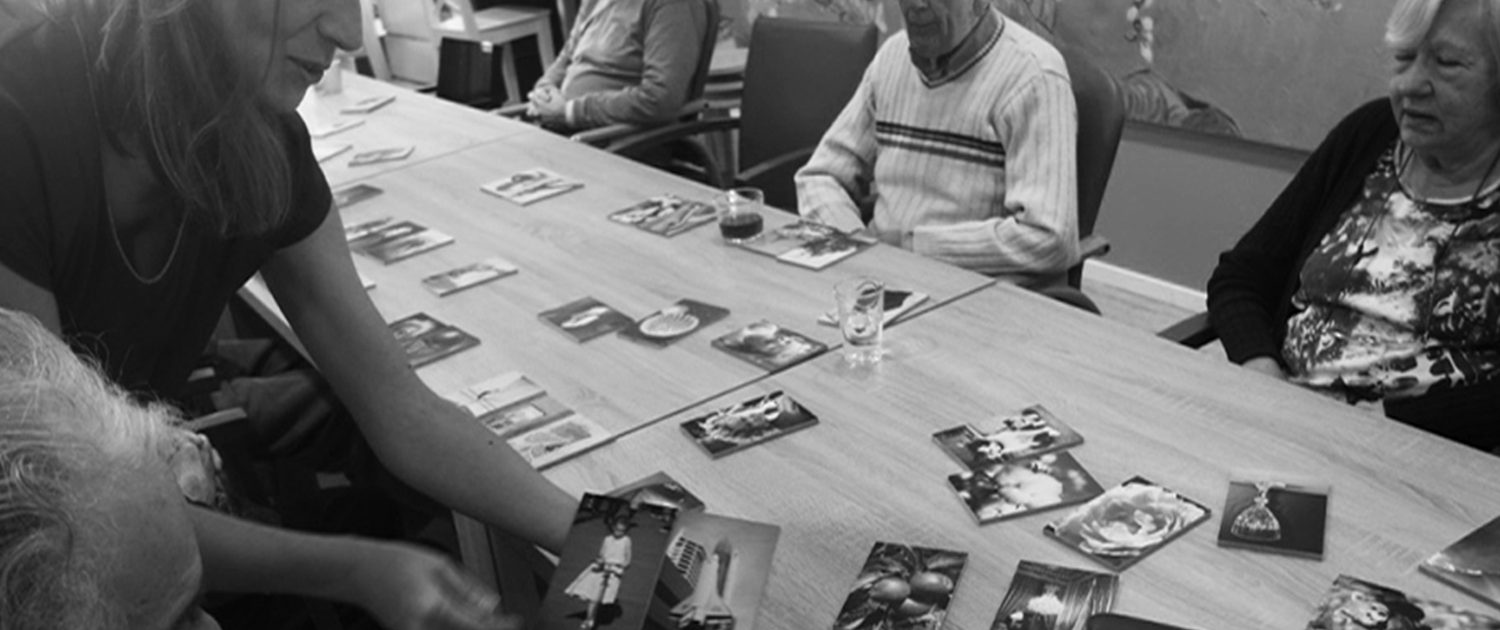Photographic Treatment ©
Photographic Treatment © wants to make a positive contribution to the well-being of elderly people with dementia. With pictures as a therapeutic tool, we provide these vulnerable elderly persons with a positive experience, while at the same time stimulating their brains.
[read more=”Read more…” less=”Read less…”]
Photographic Treatment © is based on scientific research and commissioned by the Art of Societies Foundation, developed by visual artist Laurence Aëgerter and Dutch experts in neurology, geriatrics and psychology, in collaboration with care partners Zorgbalans and Amstelring. The scientific research was led by Professor Rose-Marie Droës, Professor of psychogeriatrics. With this project, Aëgerter investigates the therapeutic use of pictures with elderly people with dementia. In October 2015 she received the Prix Nestlé, Prix International de la Photographie, Festival Images Vevey (CH), for the implementation of Photographic Treatment ©.
[/read]
Photo intervention
During the photo intervention one or more elderly persons with dementia look at photographs. Principally, looking at the photographs is not necessarily about retrieving memories from the past but about using their imaginations.
[read more=”Read more…” less=”Read less…”]
The photo intervention can take place individually as well as in a group.
Photo intervention as individual activity:
Three possibilities
- The caregiver shows the so-called fun package (Fun package nr 1, 2 and 3) . This is a series of 20 photographs that give a feeling of beauty, peace, empathy, fun, coziness, but also many photos of spontaneously smiling people. A reflex feeling of well-being is triggered for the spectator, thanks to the functioning of the mirror neurons. The caregiver talks about the pictures or let the participant react upon it.
- The caregiver shows a series of photographs out of the 65 themes of Photo series. Each theme contains 20 photographs. You can choose a thematic package, which fits to the personal preference of the participant. You look at the photographs and create a story together.
- It is also possible to use the books Photographic Treatment © as a means to have a conversation. Each book contains 30 diptychs. The photographic combinations in the book can function as a step towards the group intervention with the photo blocks.
An individual photo intervention lasts about 30 minutes and is appropriate for persons with early stage to severe dementia.
Photo interventions as group activity
During the group activity the caregiver or activity attendant shows clear examples of photo combinations out of the books Photographic Treatment ©.
The participants are stimulated to create their own combinations with the help of many photographs printed on blocks. The caregivers give support to each participant individually during this creative process and the best results are discussed within the group.
The Photo intervention as group activity lasts 30 to 60 minutes (depending on the energy of the participants) and is appropriate for persons with beginning (to mild) form of dementia, i.e. for persons with dementia in the day care system or for persons who are part of a specific assembled group of nursing home residents.
[/read]
Why?
Worldwide, 1 in 7 people suffer from dementia aged eighty and over, in the Netherlands there are currently 270,000. Due to the aging population and an increasing rise in life expectancy, one expects that half a million elderly people will have dementia in the Netherlands in 2040.
[read more=”Read more…” less=”Read less…”]
Dementia is an incurable disease. In order to inhibit its progressive course, various treatments are scientifically investigated and applied. At the same time, leading scientists fight the importance of a social investment on the side of the healthcare, which is equivalent to the cure. Photographic Treatment © hopes that the developed activities will contribute in a positive manner to the viability of dementia.
[/read]














